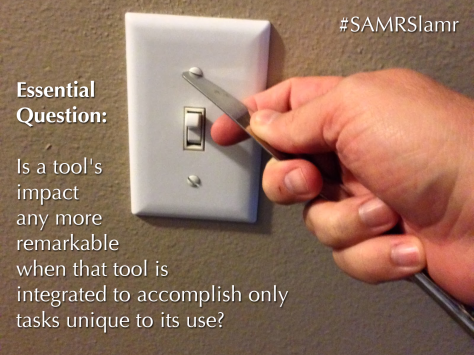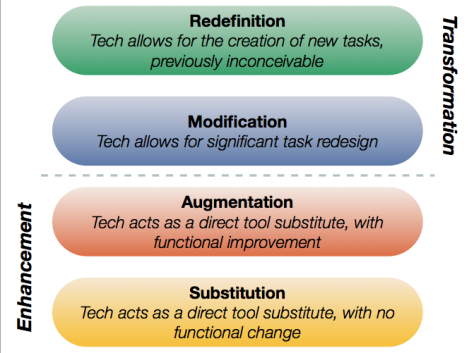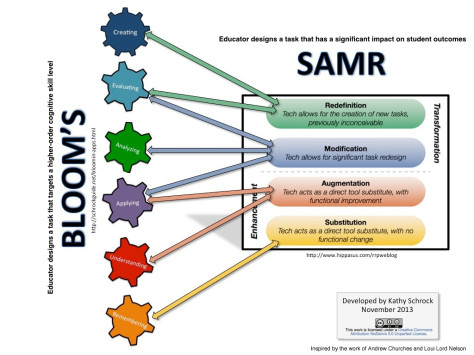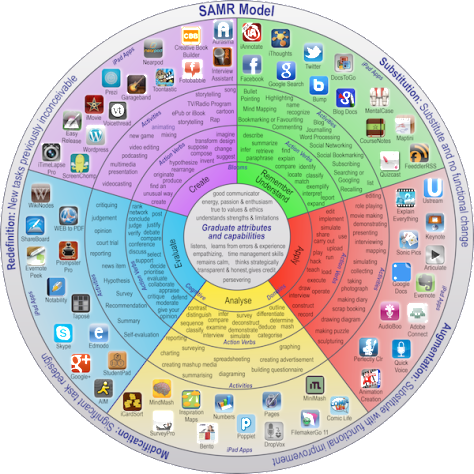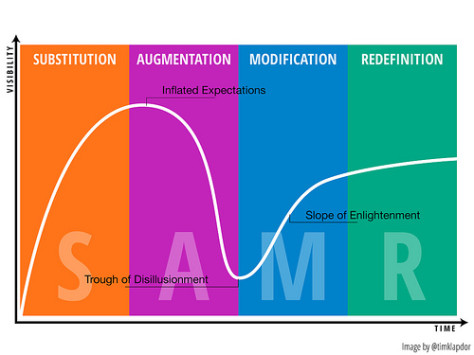In 2007, David Wiley introduced the world to the 4Rs of Open Content:
- Reuse – Use the work verbatim, just exactly as you found it
- Rework – Alter or transform the work so that it better meets your needs
- Remix – Combine the (verbatim or altered) work with other works to better meet your needs
- Redistribute – Share the verbatim work, the reworked work, or the remixed work with others
In other words, the above actions were identified in 2007 as “the four main types of activity enabled by open content.” They also now constitute four of the activities for which explicit permission can be subsequently granted when creators choose to license their content using most CC licenses. Since 2007, many have used the 4Rs Framework to assess the degree of content openness; or, the extent to which content can be reused, reworked, remixed, and redistributed without violating copyright law. Furthermore, people and societies have been pushed toward greater openness – gracious nod to openwashing – because of our newfound ability to assess philosophy using the 4Rs Framework.
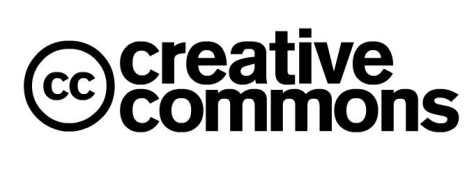
Last week, Wiley argued to expand his original 4Rs, such that a fifth might now be included:
- Retain – the right to make, own, and control copies of the content
In an attempt to move publishers toward a position of granting ownership of learning content to (strapped college student) licensees, Wiley also argued that “any advances toward ownership will have to come from the field of open education.”
As one invested in the field, I’m not sure this is entirely true. Why must it fall on a field in education to define ownership bounds and nuance? While I’m relatively comfortable saying that an unwillingness to transfer ownership indicates a lack of openness, and can clearly see that explicitness and transparency in licensing can be used to move individuals and corporations toward increased openness in practice, a number of questions give me pause.
What does ownership really mean?
Assuming that open licensing (e.g., Creative Commons) eventually embraces the 5th R, then what potential consequences will result? For example, when a licensor grants permission for users to own copies of the content that the licensor has created, will “ownership” mean that licensees will then be able to sell these copies as if they had originally created the content? How about licensees and content twenty iterations down the line? If I were to license this post with a CC-BY-RO (Retain Ownership) license, and you were to share your now-owned, remixed copy of it, will the people that acquire your copy be required to credit me when they choose to share? Twenty iterations down the line, how will users know that I created the original copy – particularly if you, as the new owner, chose to remix my work in such a way that my contributions are hardly recognizable? In order to ensure continuity, will all RO licenses also inherently require the Share Alike attribute? Similarly, will this whole process also require that licenses be transferrable, from one content owner to the next?
Currently, there’s no need for license transfers because all CC licenses are irrevocable and ownership remains with the creator. “Once you apply a CC license to your material, anyone who receives it may rely on that license for as long as the material is protected by copyright and similar rights, even if you later stop distributing it.” However, extending ownership to others will likely create this odd new relationship between (1) the original licensor, (2) early iteration licensees as new owners, and then (3) subsequent owners of content shared. Because of this domino effect, how will creators or original licensors be recognized infinitely down the line? Or, because licensees are now owners of copies of once-open content, are they now free to license their newly created re-works however they’d like, or even not at all? Are owners not entitled to freedom? Again, what does ownership really mean?
Can the technology of licensing really facilitate eternal life?
The evolution of digital content sharing has given rise to new revenue models, including some that enable an expiration date to content accessibility. While some (corporations) need this model to survive, others object to the limitations these models place on the quantity and quality of learning. I can certainly empathize with these objections. However, can the issue of content expiration really be solved through licensing and/or mere declarations of openness? Should it be? Or is disappearing ink a necessary evil when market economies are used to improve quality?
In a case similar to that of disappearing ink, Apple has remained arguably closed in its terms and conditions related to the transferability and ownership of content purchased in the iTunes Store. It was rumored in 2012 that Bruce Willis was planning to sue Apple because their terms didn’t allow for him to bequeath his rightfully-purchased iTunes library to his children upon the time of his passing. As it was confirmed that this episode was only a rumor, it was also clarified that even though Apple now provides users with DRM-free files, the only thing iTunes Store users really own is a license to play the content on up to five devices. Actual music and movie ownership never changes hands. And while I’m comfortable proclaiming that Apple is not open because they’ve failed to provide customers with the right to retain, I wonder what good this proclamation will do. Will people stop using the iTunes Store to purchase convenient access to music; or is the convenience, quality, and seamless experience worth the costs and alarming lack of openness?
Why should the act of declaring content openness be used to limit or extend its longevity? Surely there must be a better way.
Why is ownership necessary?
Wherein lies the true value of openness ownership? Must students own learning content – along with the history of their interactions with that content – in order to fully enjoy the benefits enabled through their access?
I don’t think so. Access trumps ownership, but only when access can be guaranteed without it.
Beyond the disappearing ink and Bruce Willis iTunes dilemmas, I now struggle to see an overwhelming need for content ownership. This wasn’t always the case. In the ’80s and early 1990s, our family purchased an extensive movie collection on VHS. With the increased clarity and longevity of DVD technology, we then chose to repurchase many identical titles throughout the late ’90s. Why? Because we wanted to own the highest quality copy of the content that we loved. Why did we want to own, instead of rent, lease, or borrow? Because we wanted the guarantee of timely access to the content that we loved, in a format we could actually use. Not surprisingly, this is also exactly why we repeated the cycle ten years later, this time because of our newly acquired Blu-ray snobbery.
Does anyone else see a problem here?
With this cycle in mind, what will stop us from wanting to repurchase this same content again in 2025, so that we might then be able to fully enjoy it using the latest technology? (400K televisions, I can’t wait!) Nothing will stop us, really, minus the lessons we learn along the way. Did we really need to own Star Wars in every format? No, but we certainly wanted access to it; and ownership was the best way in those days to ensure dedicated access.
Is ownership still the best way to guarantee access?
Probably not. The crazy irony of this whole situation is that the thing we’ll probably need most in 2025 is a content purchasing model similar to Apple’s.
When I originally purchased (access to) music in the iTunes Music Store back in 2003, it was encoded at 128 kbit/s using then-current AAC technology. In 2009, Apple updated their music distribution practices to parallel improvements being made in popular consumer technology. Consequently, they’ve since released music at higher-quality bit-rates (256 kbit/s) and with enhancements built into the AAC standard of encoding. In spite of these improvements to the format of the music, I can log into Apple’s Music Store today and download an improved copy of the music to which I purchased access in 2003. Do I own the music I’ve purchased from Apple? No, but convenient access to it – in a format that works well today – is worth far more to me as a consumer than the cassettes I own and have stored in boxes through the years.
My suspicion is that when it comes to access to learning content in a useable format, tomorrow’s students will probably feel the same way. Hence, the rub with this entire dilemma is that better access can probably be provided using a relatively closed model for sharing (like that enabled by Apple), even though our hope is to enable greater access through increased openness. Can people and societies be pushed toward greater openness because of our newfound ability to assess philosophy using the 5Rs Framework? Probably, as long as we value quantity of access over quality of access.
When will this post ever end?
In conclusion, the issues of usage and ownership reside in parallel, but discrete universes.
- Because ownership is no longer required for high-quality access, I question the value of measuring it.
- The issues surrounding ownership are complex, particularly when mingled with licensing.
- Combining openness with ownership may have a tendency to emphasize quantity of access over quality of access.
Can a car be owned today without maintaining its license? Of course it can, but it can’t be legally driven. (Just like open content.) Is a license required to transfer a car’s ownership? Not really. (Just like open content.) Why muddy the waters of openness with ownership, if ownership isn’t really what’s needed most?





